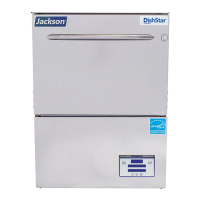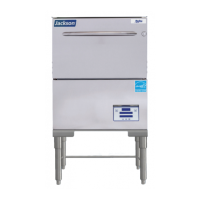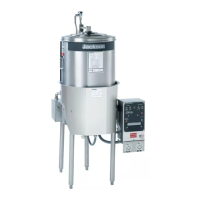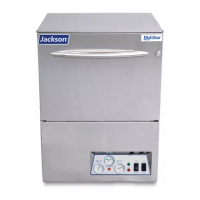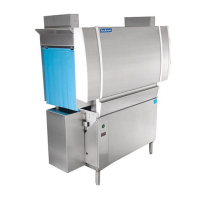1. Set rinse aid feed time to four seconds for the ES-2000XSP(PH) or six seconds for the ES-4000XSP. If the account has very
hot water temperature (160
°F or greater), use one or two seconds as a starting point instead of the normal four to six seconds.
Adjust the rinse aid cam timer so that the rinse aid spray begins immediately after the machine finishes filling with water.
2. Perform a sheeting test. Run a load with a set of glassware and a set of flatware.
NOTE: A new rinse aid capsule needs to be “wetted” before running a sheeting test. To wet the solid rinse aid,
run four or five cycles on the dishmachine. If the dishware does not sheet, try the following things in the order
given below:
a) Adjust the rinse aid feed time.
b) Adjust the feed water pressure.
NOTE: If the pressure is changed, the detergent titration will need to be rechecked.
c) Examine the rinse aid spray pattern. If necessary, clean and/or replace the spray nozzle.
3. Periodically, the consumption rate of the rinse aid product needs to be checked. After a minimum of two weeks, calculate the
number of racks washed per rinse aid capsule used. Do this by recording the count and taking inventory at each service call.
If the rinse aid usage is high (racks per capsule are low) and the dishware results are good (no spots), decrease the rinse aid
feed time. refer to the rinse aid consumption table below:
RINSE CONSUMPTION GUIDELINES
WATER HARDNESS
Food Soil Soft Medium Hard Very Hard
(0 - 4 gpg) (4 - 8 gpg) (8 - 12 gpg) (12 - 16 gpg)
Light 1400 1000 800 700
Medium 1200 900 600 500
Heavy 1000 600 400 300
(Racks per Capsule)
ES-2000 & ES-4000 Series Installation/Operation Manual 7610-011-35-10
Issued: 10-29-2007 Revised: N/A
SECTION 2: INSTALLATION/OPERATION INSTRUCTIONS
RINSE AID FEED SET-UP
20

